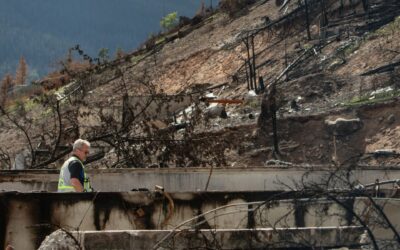This blog originally appeared in the Toronto Star.
People love to talk about “make-or-break” moments for climate change: 2021 was labelled a make-or-break year, and COP 26 was the make-or-break climate summit. (Full disclosure: I called it that too, and I stand by my opinion that it was pivotal.) There’s nothing wrong with this rhetorical flourish because it’s hard to overstate the importance or urgency of acting on climate change.
But here’s the truth: no one year is make-or-break for climate policy. Climate policy is not a pass-fail class. It’s a life-long lab: most of the time, policy change happens in a series of small improvements: this piece of policy is tweaked, public opinion on climate shifts a few points. And these small wins add up.
Then sometimes, there are big years, and 2022 could be one of them for Canada.
One such watershed moment will happen soon: by the end of March, we can expect to see Canada’s first emissions reduction plan required by the Net Zero Emissions Accountability Act. New Minister of the Environment and Climate Change Steven Guilbeault has a challenge on his hands, as the country needs a robust emissions-reductions plan to achieve the federal target of 40 to 45 per cent reductions by 2030. To deliver on those reductions, the plan will need to be comprehensive and provide clear signals to all sectors and set up actions consistent with the deep reductions needed to reach net zero by 2050.
However robust our emissions-reduction plan, Canada also needs to prepare for the effects of climate change that we’re already starting to see. Canada is warming twice as quickly as the global average, and figuring out how to protect ourselves from climate extremes shot up to near the top of the federal government’s to-do list after the B.C. heatwaves and floods claimed so many lives in 2021. The country’s first National Adaptation Strategy will be published this fall, and will need to both identify adaptation needs and develop actionable policies to boost Canada’s climate resilience in concrete, measurable ways.
Along with this marquee piece of policy, 2022 should also see measures tackling immediate adaptation priorities across governments, like up-to-date, accessible data on climate-related risks such as flooding, faster building code updates, and investments to protect the most vulnerable.
As global markets come to grips with the transformation required to tackled climate change, Canada has some catch-up to do in terms of climate-related financial disclosures—the regulations that require companies to determine and disclose how the net zero transition and the effects of climate change could affect their future profitability. These rule changes, an essential element of the broader push to build a low-carbon, resilient economy, is becoming the new global norm, ensuring better information for investors, lenders, and insurers to redirect capital to businesses and projects that are aligned with global climate adaptation and mitigation goals.
In 2022, therefore, Canada should make detailed climate-related financial disclosure mandatory, ensuring that businesses and financial markets in Canada recognize and reflect risks associated with the low-carbon transition and the impacts of a changing climate. Moving too slowly on this could mean Canada finds it harder to attract global capital.
In a year that could bring in some major shifts, it’s important to remember that policies are about real people: people’s health and well-being, livelihoods, homes, and hopes for the future. The federal government continues to consult on how to ensure our economy thrives in the new net zero transition—for the benefit of all Canadians—and 2022 should see concrete just-transition plans at the provincial and federal levels that could provide concrete supports and resources to affected workers and communities. And the forthcoming National Adaptation Strategy is about steps governments can take to protect people, communities and jobs in the face of an increasingly volatile climate.
No doubt 2022 has a few surprises in store for us. (Nothing too sensational, please: we could all do with a bit less drama in real life.) But it should surprise no one that this will be an important year for Canadian climate policy. Let’s not call it make-or-break, though. It’s a make-and-make year: one in which important progress will be made on many climate-policy fronts, snowballing towards even greater progress in the years to come.





